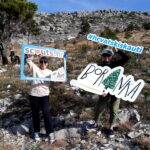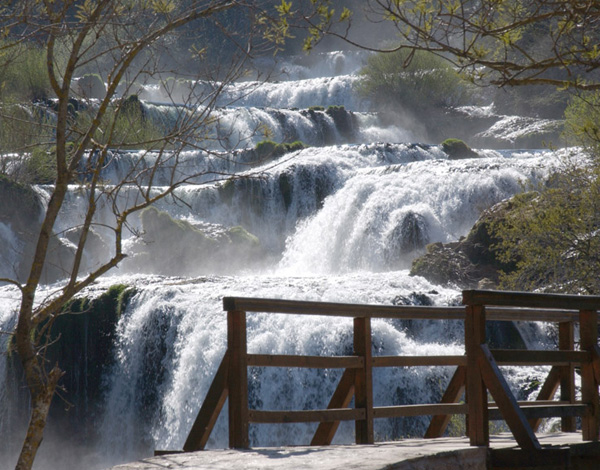
Boranka Re-forestation Project in Split.
October 25, 2020
Travel Tales from the French Countryside.
January 21, 2021IT was Barbara’s idea to treat us to a gourmet picnic lunch in the Dalmatian countryside, the ‘Zagora’ Region, as it’s called in Croatian. This is the area directly behind the coastal mountain range, the Inland. Some of the most significant pages of early Croatian history from the 9th to the 11th Centuries were written in the Dalmatian Zagora area. Over two and a half centuries Christian and Islamic spiritual domains met here at the close of the Middle Ages. followed by complete rule by the Ottoman empire in the 16th cent.,then annexed to the Venetian Empire, as a result of the Venetian Turkish wars of the 17th and early 18th centuries.
Susie, Kathy, Barbara and myself piled into the car at the start of our perfect journey, driving 30 minutes up and out of Split towards Bisko and on to the village of Donji Dolac.

In Gornji Dolac we parked the car at the country cottage of Marko Bilić who kindly allowed us to set up our picnic on his outdoor area.. Barbara fed us some delicious freshly made buns with roast beef and condiments, with some dips and luscious fillings, making sure we were all fuelled up for our 2-hour walk through the fields and village.





In the 18th Century, life returned to some form of normality after being ravaged from both sides between the Turks and the Venetians. But it was not so simple!. Now during this period, being ruled by the Venetians, large parcels of cultivatable land was given to ‘deserving’ individuals,, however it came with the condition that it would be passed down to the male lineage of the family without the right of sale and with an obligation to give 10% of their production as a fee for the use of the land.. Peasants were obliged to plant at least 4 fruit trees, olive and mulberry trees.

We roamed down a country lane and Barbara told us of some of the tragic real-life stories she had heard about that happened in this area during the time of World War 11.. So hard to imagine any type of conflict happening in the colourful and peaceful scene all around us.


A visit to any cemetery in Croatia is always a memorable experience, and here in this village, it was exceptionally so. Cemeteries in Croatia not to be missed are Miragoj Cemetary in Zagreb, and one of the most beautifully designed is the cemetery of Vara?din one of the most highly rated and most visited cemeteries in Europe!

The beauty of the countryside in autumn, blue cloudless skies, fresh air, perfumes of herbs and wildflowers growing randomly in the fields, leaves one with a sense of wonderment and a true sense and appreciation of Mother Nature.



Crossing a field on our way back to Marko’s cottage we came across a fascinating young woman called Lucia. We stopped to speak and she explained that she and her husband had moved back to the village from a busy city lifestyle in Zagreb. She spoke of her love of reading rich and detailed stories and poetry written by so many well-known authors and here in this field she loved to sit and read in solitude with no interruptions., choosing a more simplistic and definitely healthier way of life.

Our day ended late afternoon as the sun dropped low on the horizon and the mountain range cast deep blue shadows across the valley, yet there was something else on the agenda that we decided to do on the spur of the moment and that was to drive an extra 14 km to the village of Susie’s grandparents and mother’s birthplace, the village of ?ista Velika and as we drove slowly through the narrow lanes, there appeared before us a tall and handsome young man,.Susie studied him closely, ” I think that’s my cousin Mario! she said.. then promptly stopping the car to speak and sure enough, it was as she thought, so with great excitement, we all descended upon him and his lovely wife and two daughters….although they live and work in Split this is their home away from home, a place to come and relax on weekends and holidays.
A day spent wandering in the picturesque Dalmatian Zagora region is always a delightful getaway into a world of nature, village life and cultural traditions.




